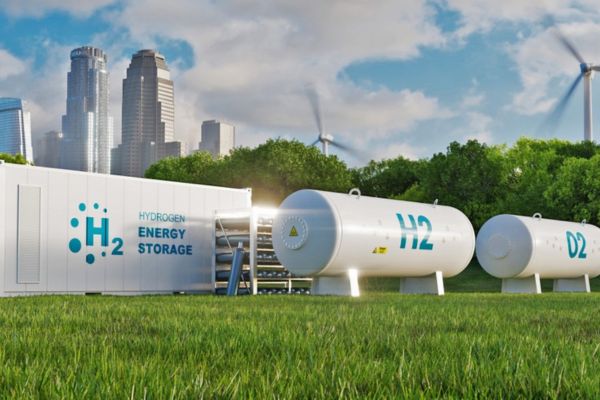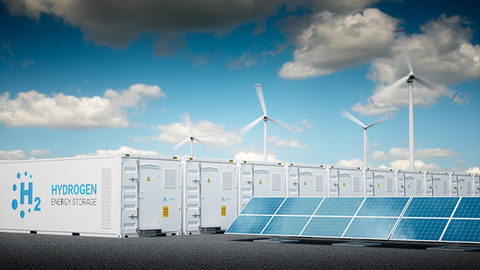As the world pivots towards sustainable energy solutions, Japan is setting a precedent with its pioneering approach to hydrogen energy. Situated at the forefront of the green revolution , Japan’s hydrogen market is forecast to grow at a compound annual growth rate (CAGR) of 3.72% from 2024 to 2032. This growth implies hydrogen production increasing from 2.11 million tonnes in 2023 to 2.93 million tonnes by the end of the forecast period . Such expansion is not just a numerical achievement but a testament to Japan’s strategic commitment to energy sustainability and economic revitalization through innovative technologies.
Hydrogen is an energy-efficient chemical that can be produced from a variety of sources, including solar, coal, wind, natural gas, and hydroelectric power. Hydrogen can also be used to produce a variety of fuel derivatives, including ammonia, methane, methanol, and synthetic liquid fuels. Hydrogen is a highly efficient energy source, and this property will greatly aid its adoption in emerging markets. Currently, 99.6% of hydrogen is produced from hydrocarbons. Grey hydrogen, obtained by reforming natural gas to produce CO₂ and hydrogen, accounts for approximately 71% of the total. Brown hydrogen is mainly produced by coal gasification.
Request a free sample of this report @ https://www.reportocean.co.jp/request-sample/japan-hydrogen-market
Strategic push towards a hydrogen fuel future:
Japan’s commitment to hydrogen as a cornerstone of its energy strategy is in response to several critical national challenges, including energy security, economic competitiveness and environmental sustainability. With few natural resources of fossil fuels, Japan has long been forced to import energy resources, making energy security a long-standing concern. By investing in hydrogen, Japan aims to diversify its energy mix, reduce reliance on imported fuels and cut greenhouse gas emissions.
The government has contributed to the shift towards hydrogen by implementing policies that encourage both the production and consumption of hydrogen energy. Subsidies for hydrogen fuel cell vehicles (FCVs) and the development of hydrogen filling stations are just a few examples of such support. Furthermore, Japan’s Basic Hydrogen Strategy, formulated in 2017, outlines the ambitious goal of achieving cost parity between hydrogen and conventional fuels, aiming to make hydrogen a viable and widely used energy source in various sectors.
Industry Adoption and Innovation:
The transport sector in particular stands to benefit greatly from this hydrogen push, with companies like Toyota and Honda leading the way and already bringing hydrogen fuel cell vehicles to market. As well as reducing carbon dioxide emissions, these vehicles offer practical advantages in terms of refuelling times and driving range compared to battery electric vehicles.
Beyond transportation, hydrogen is gaining popularity in domestic and commercial energy applications. For example, hydrogen fuel cells are used to generate electricity in buildings and in portable units for outdoor activities. Industrial applications are also thriving, with hydrogen being used in steel and chemical manufacturing, reducing the carbon dioxide emissions associated with these industries.
To get more business strategies, request a free sample report @ https://www.reportocean.co.jp/request-sample/japan-hydrogen-market
List of major companies:
- Iwatani Corporation
- ENEOS Corporation
- Kawasaki Heavy Industries
- Toyota Motor Corporation
- Toshiba Corporation
- Mitsui & Co., Ltd.
- Sumitomo Mitsui Financial Group
Investment and infrastructure development:
Investment in hydrogen infrastructure will be crucial to support the projected market growth. Japan has been developing a network of hydrogen refueling stations, which is essential for the widespread adoption of FCVs. As of 2023, Japan will have the most hydrogen stations in the world, underscoring Japan’s commitment to building a hydrogen economy.
International cooperation also plays a vital role in expanding Japan’s hydrogen market. Japan has hydrogen import partnerships with countries such as Australia and Brunei, which are crucial to meeting domestic demand while maintaining sustainable production methods. Such international supply chains not only enhance Japan’s energy security but also promote the global adoption of hydrogen technology.
Future challenges and opportunities:
Despite the optimism, the road to a hydrogen economy is riddled with challenges. The high costs associated with producing, storing and distributing hydrogen are major barriers. Moreover, while hydrogen’s environmental benefits are clear, its production relies primarily on natural gas, and a shift to greener methods such as electrolysis powered by renewable energy sources will be necessary to truly realize hydrogen’s environmental benefits.
As technology improves and costs fall, the potential for hydrogen to play a pivotal role in Japan’s energy situation becomes increasingly real. Ongoing improvements in electrolysis technology and the development of blue hydrogen using carbon capture and storage are promising areas for solving current hydrogen production challenges.
Request a free sample report to get more business strategies @ https://www.reportocean.co.jp/request-sample/japan-hydrogen-market
Segmentation Overview
The Japanese pharmaceutical market is segmented with a focus on product and dosage form.
製品別
- brand
- generic
By dosage form
- tablet
- Capsules
- Injection
- Powder
Looking to the future:
Looking to 2032 and beyond, the trajectory of Japan’s hydrogen market is not just about economic growth and energy security, but also about setting a global standard for energy innovation. With continued government support, industry engagement, and technological advances, Japan’s hydrogen market is sure to become a cornerstone of its sustainable energy outlook. This journey will undoubtedly provide valuable insights and precedents for other countries looking to harness the power of hydrogen, showcasing Japan as not just a market leader, but a global innovator in the energy sector.
Key points of Japan hydrogen market survey
- Steady growth: Japan’s hydrogen market is expected to grow at a CAGR of 3.72% from 2024 to 2032.
- Increase in Production: The market’s production capacity is expected to increase significantly from 2.11 million tonnes in 2023 to 2.93 million tonnes in 2032.
- Government support: Strong policy initiatives such as subsidies, carbon neutral targets and energy security strategies are encouraging hydrogen production and use.
- Expanding industrial uses: Hydrogen is increasingly being adopted for a variety of applications, including power generation, transportation (fuel cells) and industrial processes, driving demand growth.
- Focus on green hydrogen: In line with Japan’s commitments to reduce greenhouse gas emissions, there is increasing effort into the production and use of green hydrogen (from renewable energy sources).
Key Issues in Industry Analysis for Japan Hydrogen Market Research
- What are the main barriers preventing the expansion of hydrogen production in Japan, particularly green hydrogen production?
- How is the Japanese government’s hydrogen roadmap influencing investment and technology development in the hydrogen sector?
- What role will international partnerships and collaborations play in expanding Japan’s hydrogen market?
- What sectors are most promising for hydrogen adoption (transportation, power generation, heavy industry, etc.) and what are the challenges for these applications?
- How can hydrogen production costs be reduced to ensure it is competitive with traditional energy sources in Japan?
Request the full report @ https://www.reportocean.co.jp/industry-reports/japan-hydrogen-market
For more insights and a full copy of the report, please visit the Report Ocean website or contact the press office.
About Report Ocean Inc.
Report Ocean is a leading market research and consulting company with over 7 years of experience in providing advanced analytical research solutions, custom consulting and deep data analysis to individuals and businesses seeking accurate, reliable and up-to-date research data and technical consulting. We provide strategic and growth analysis insights, providing companies with the data they need to achieve their goals and help them take advantage of future opportunities.
Our research studies help our clients make better data-driven decisions, understand market forecasts, capitalize on future opportunities and optimize efficiency by providing accurate and valuable information with us as your partner.The industries we cover are diverse, including technology, chemicals, manufacturing, energy, food & beverage, automotive, robotics, packaging, construction, mining, gas and many more.
Report Ocean believes that integrating our skills with the needs of our clients, the right expertise can deliver powerful insights. Our dedicated team works tirelessly to create the most effective solutions for the business needs of our clients, be they multinational corporations, product manufacturers, SMEs or start-ups.
Media Contact:
Name : Nishi Kant
Position: Head of Marketing
TEL: 03-6899-2648
Insight IQ Subscription : https://www.reportocean.co.jp/insightsiq
Email: sales@reportocean.co.jp
URL : https://reportocean.co.jp/
Blog Sites = https://japaninsights.jp/
Social Media:
LinkedIn = https://www.linkedin.com/company/reportoceanjapan/
Twitter = https://x.com/ReportOcean_JP
Other reports:
Calcium Aluminate Cement Market
Asia-Pacific Diesel Exhaust Fluid (AdBlue) Market
Asia-Pacific Advanced Space Composites Market
Asia-Pacific Used Car Finance Market
Singapore Bottled Water Market
Japan Herbal Tea Market
Baby Diapers Market
Singapore Dishwasher Market
Vietnam Kitchen Hood Market
Japan Laundry Appliance Market
Air Freshener Market
Electrical Control Panel Market
Automotive HVAC Systems Market
Asia Pacific Reverse Logistics Market
Japan Prefabricated Building Market
Wearable Device Market
Japan Supply Chain Management (SCM) Market
Virtual Fitness Market
Asia-Pacific Metal Matrix Composites Market
Enzyme Market
Artificial Intelligence (AI) Drug Discovery Market
Laparoscopic Equipment Market
Cell and Gene Therapy Market
Pre-Diabetes Market
Hemodialysis Catheters Market
Bakery Products Market
Frozen Bakery Products Market
Japan Smart Home Appliances Market
Composite Insulator Market
Aerospace Cybersecurity Market
Drone Flight Controller System Market
South Korea Agricultural Drone Market






